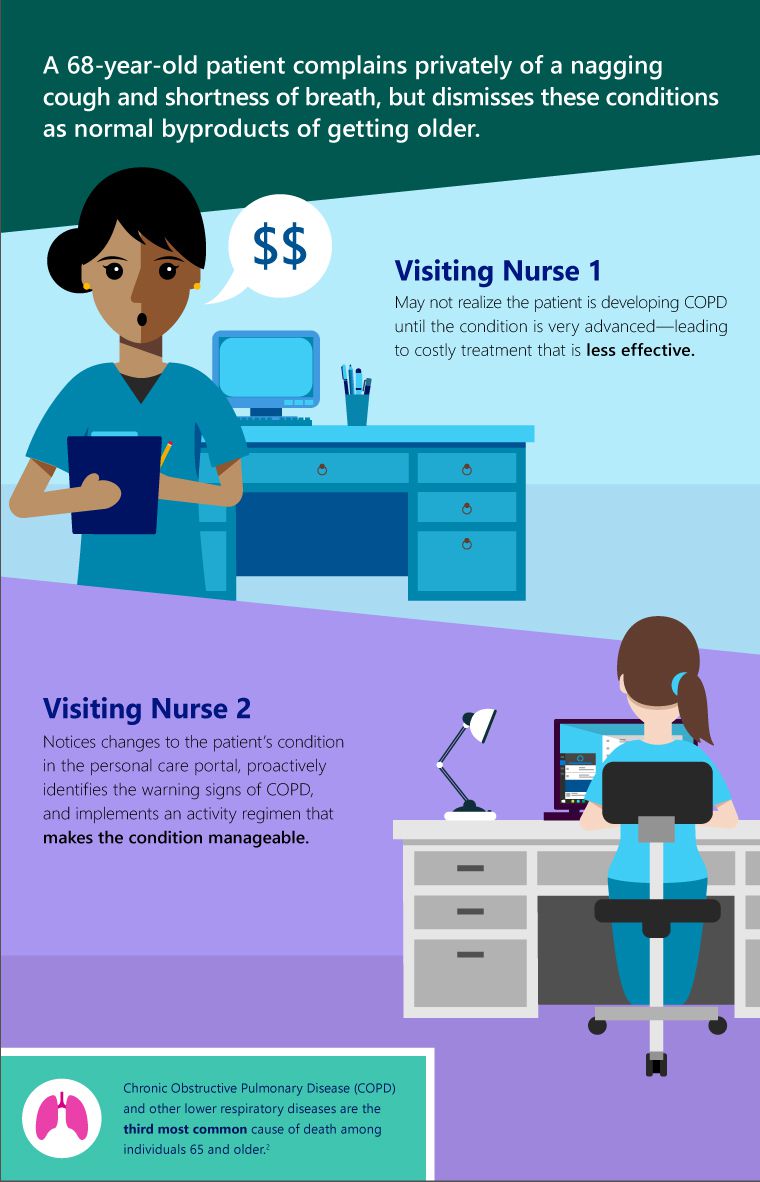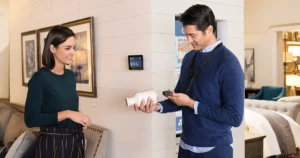
How Astute, Inc. applies the latest technology to make profound changes in healthcare
| Focus on: Engage Customers, Transform Products, Optimize Operations |
Innovations in technology are revolutionizing the way healthcare is administered. New devices, advances in hardware and software capabilities, and the Internet of Things (IoT) allow caregivers of all kinds to make smarter, data-driven decisions, and improve outcomes for their patients. As a B2B organization specializing in patient monitoring, Astute Inc. leverages new technology like IoT to transform their internal operations and drive change for their customers.

Clint is an 83-year-old man with mobility restrictions who lives alone at an assisted care facility. Every day, a caregiver helps Clint with personal care tasks like bathing, dressing, and cooking—and leaves every night once he is settled in bed. In the middle of the night, Clint falls on his way to get a glass of water from the kitchen in his apartment. On this particular night, the nearest staff member is making rounds on another floor in a different wing of the building. Unless a neighbor happens to hear Clint fall, it may be 8 hours or more before someone discovers him. If Clint isn’t discovered until the caregiver returns in the morning, emergency response might be significantly less effective than immediate care, if it is effective at all.
But Clint’s story doesn’t have to end this way. Let’s say Clint is wearing a sensor that is connected to his caregiver’s mobile device. As soon as Clint takes a tumble, an alert is sent to the walkie-talkie carried by the facility staff. Meanwhile, the visiting nurse would get the same alert on his/her cellphone. By using the latest technology, the caregiver is able to drastically reduce the amount of time it takes for Clint to get the proper care.
Astute’s mission is centered around three pillars: reducing the cost of care, improving patient outcomes, and creating new revenue opportunities for their care providers—visiting nurse organizations, assisted care facilities, and medical application developers. To best achieve their objectives, Astute recently kick-started their own Digital Transformation by standardizing their operations across a wide range of Microsoft offerings, including Azure, Power BI, and machine learning.

Engaging caregivers with intuitive and innovative tools
The combination of Astute’s remote data and patient monitoring capabilities and Microsoft’s products and services is creating an opportunity for more value-added interactions between Astute care providers and the patients they serve.
Even if customers possess limited software and programming expertise, Astute’s partnership with Microsoft makes it easy for these organizations to leverage Azure DocumentDB and Power BI to create personalized portals that track the health trends and progressions of each individual patient without putting additional strain on their budgets or having to hire additional developers and engineers—an industry first that gives more power to caregivers.
By pushing control of systems back to the care providers and giving them access to pre-configured applications and analytics tools, Astute is empowering caregivers with capabilities they didn’t have before. This enables them to create rich, interactive experiences that promote real time coverage in private residences and assisted care facilities and allows Astute care providers to better anticipate health issues and improve emergency response.

Optimizing operations through standardized processes
Astute’s remote patient monitoring products and services are designed to help customers cut costs, increase revenue, and promote a better quality of life for their patients. But for these products and services to deliver the desired impact, it is essential that Astute’s technology, people, and processes work in tandem.
Astute has always had the pieces in place to make profound changes in healthcare. But, without the proper technical backing, the startup faced several challenges that impeded their vision. Prior to this optimization, Astute struggled to integrate a wide range of components from multiple vendors so that they would work together seamlessly. Scalability was also an issue, as legacy solutions hindered Astute’s ability to keep up with the rapidly evolving healthcare landscape and adhere to global regulatory requirements.
By standardizing their processes and platforms with Azure, Astute has transformed their internal operations and can spend more time improving outcomes for their customers. With Azure, Astute is now able to support the rapid development of the applications, devices, and sensors that take patient monitoring to the next level. Azure’s global reach also provides Astute with the scalability and scope needed to deploy their solutions almost anywhere and still maintain compliance with HIPAA and other healthcare requirements that pertain to data management.
[“We really look at this [transformation] as a global play, which was one of the biggest factors in helping us make the decision to partner with Microsoft; because the Azure platform can be deployed more places than just about [any other cloud solution].” – Nicholas Vassilakis, CEO of Astute, Inc.]

Transforming products with IoT and the cloud
Remote and flexible patient monitoring is one of the major ways IoT is transforming how healthcare is administered, and Astute’s low-cost patient monitoring services are continuing to change the game. Using IoT and Azure capabilities makes collecting data on tablets and other standalone devices—and analyzing this data in the cloud—simple and easy. But Azure isn’t the only Microsoft solution helping Astute change healthcare.
While Astute’s primary focus isn’t on hardware, they do offer several patient-facing devices and sensors that serve as vehicles for data collection and promote around-the-clock patient monitoring. One of Astute’s ongoing initiatives centers around an intuitive tablet, powered by Windows, that has the potential to revolutionize the way caregivers communicate with their patients. These tablets enable patients to access their personalized health data and allow caregivers to upload relevant articles and insights based on each individual patient’s health status. Windows IoT and Skype on these devices enable easy engagement between caregivers and their patients through video conferencing, while Microsoft Intune helps ensure the simplified management of applications and devices. Azure’s compatibility also facilitates the seamless integration of this tablet with a wide range of other medical devices.
Driving digital transformation in healthcare
In 2017, Astute plans to roll out Astute Care Guardian™, their remote patient monitoring service for independent and assisted care facilities, and Astute Data Guardian™, their development kits for medical application developers, to customers in the United States. In the years to come, they plan to make these services available worldwide—helping care providers across the globe improve patient outcomes, reduce the cost of treatment, and create new revenue opportunities. As they expand, Astute also has aspirations to extend their partnership with Microsoft to include more products, like artificial intelligence and Cortana analytics, in their devices and patient monitoring solutions, so that patients like Clint get the most expedient care available.
[“As we move the platform forward, we’ll end up combining the data on the person and the data on their environment into a central control repository and then really be able to do some pretty amazing things.” – Nicholas Vassilakis, CEO of Astute, Inc.]
Organizations across all industries are using the latest technology to reimagine what’s possible and do amazing things. Discover their stories and learn how your organization can begin its Digital Transformation journey today.
Related Content
- Join us for a free webcast and learn about how other healthcare organizations are digitally transforming with Microsoft Power BI.





